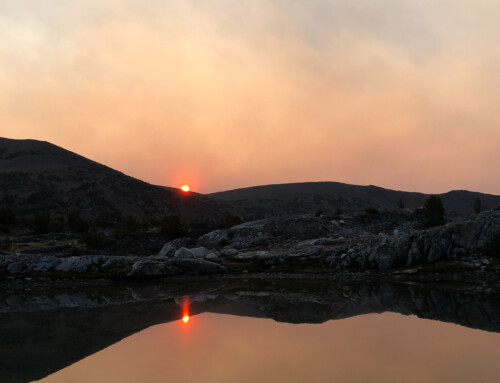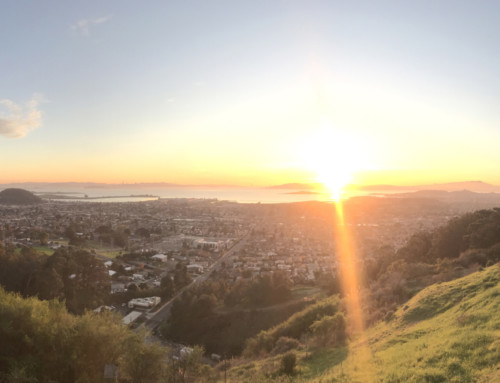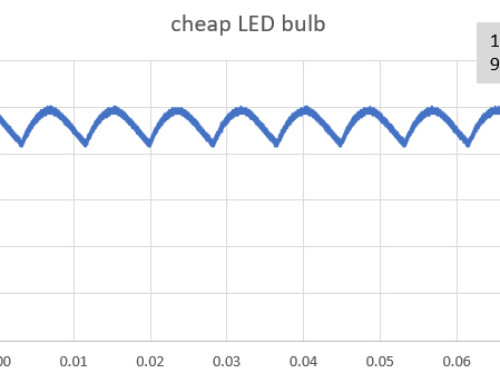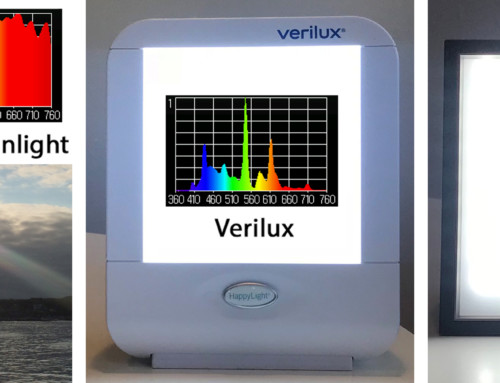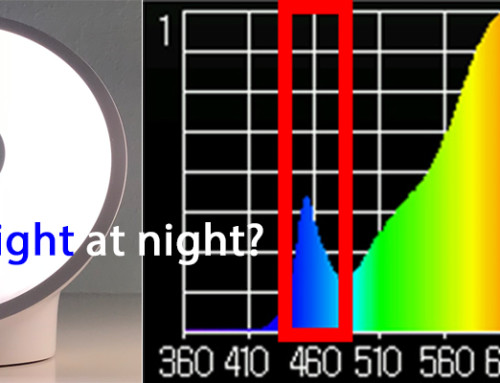Natural light is fundamentally different than the artificial light sources which we use in our homes, offices and schools.
(1) Natural light is full spectrum, which means it contains all the colors of the rainbow, as well as wavelengths (colors) that we cannot see (infra-red and ultra violet). The visible light spectrum spans from violet (~400nm) to red (~700nm). Without all the colors of the rainbow, the world around us looks dull as we cannot see all of the colors, skin-tones and textures of our surroundings. The non-visible portion of the spectrum is also important, as ultra-violet (below 400nm) drives vitamin-D production (as well as skin and eye-damage) and infra-red makes our skin glow (and provides warmth).
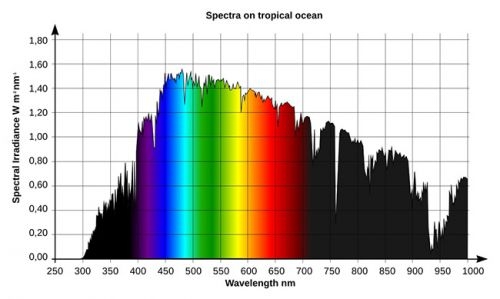
Spectrum of sunlight in Fiji in July (https://reefll.com/index.php?route=information/theory&theo_id=28)
(2) Natural light is dynamic, which means the intensity and colors of light (wavelengths) change with the time of day, time of year, the weather and the location on earth. Our mood, energy, metabolism, sleep and recovery depend upon the daily cycles of natural light, since these changes synchronize our circadian rhythms and hormone cycles. When the sun is overhead, daylight is bright and rich in blue (which stimulates us), while at sunset daylight softens and is dominated by orange and red (which naturally relaxes us). These daily changes are due to the atmospheric filtering of sunlight, which changes with the angle of the sun, the location on earth, and the time of year, as well as the local weather conditions. Humans, plants and animals depend upon these daily and seasonal cycles of natural light for their health and wellness.
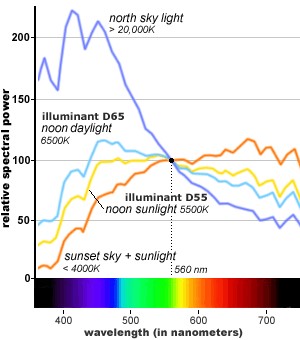
Variation of natural daylight with the time of day (https://www.handprint.com/HP/WCL/color1.html)
Artificial light sources fall woefully short of providing the rich vitalizing light of natural daylight, as shown in the ‘spectral power distributions’ (SPDs) below. Most artificial light sources simulate white light by providing only a few colors of the rainbow. This problem is made worse by energy efficiency regulations which are driving the move to fluorescents and LEDs. As the SPDs below show, it’s no accident that we look and feel our worst under fluorescent lights. Incandescents (Edison’s original bulb) and halogens are being phased out because they are very inefficient, but they do provide beautiful full spectrum light. Unfortunately incandescents are stuck in sunset (rich in red light) and therefore can’t provide the bright blue-rich daylight required to lift our mood, boost our energy, regulate our metabolism and improve our sleep. To put it simply: the intensity and mix of colors emitted by artificial light sources does not change with the time of day, severely limiting the ability of artificial light to provide the necessary queues for synchronizing our bio-rhythms. Today’s artificial light sources are neither full spectrum nor dynamic, leaving our indoor spaces lit with ugly, unhealthy light.

Spectral power distributions (SPDs) of natural daylight compared to artificial light sources (http://www.lightingschool.eu/portfolio/understanding-the-light/)
Additional reading:
– Shining a light on what natural light does for your body
– The Benefits of Natural Light
– Benefits of exposure to natural light during the day
TIPS:
(1) get outside during the morning hours, and use dim incandescents at night
(2) if possible bring natural light indoors during the day (windows are beautiful)


